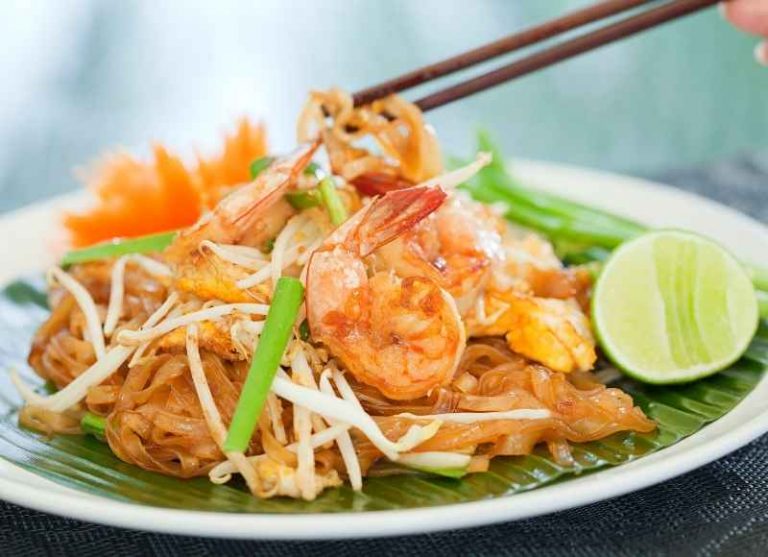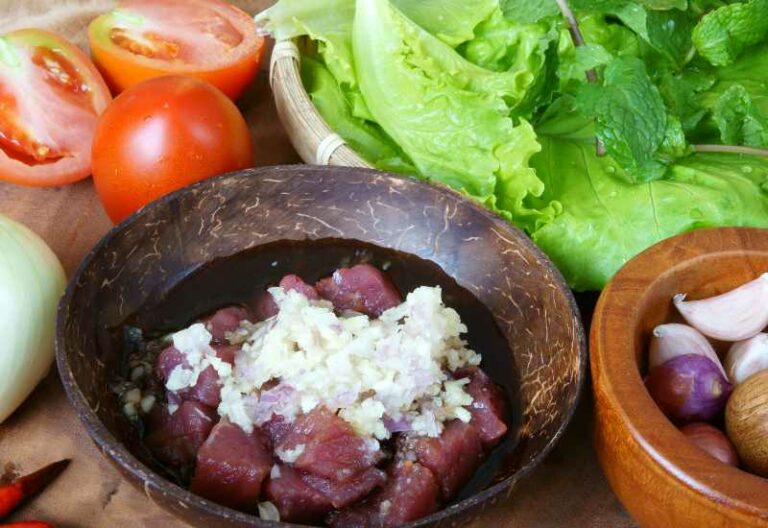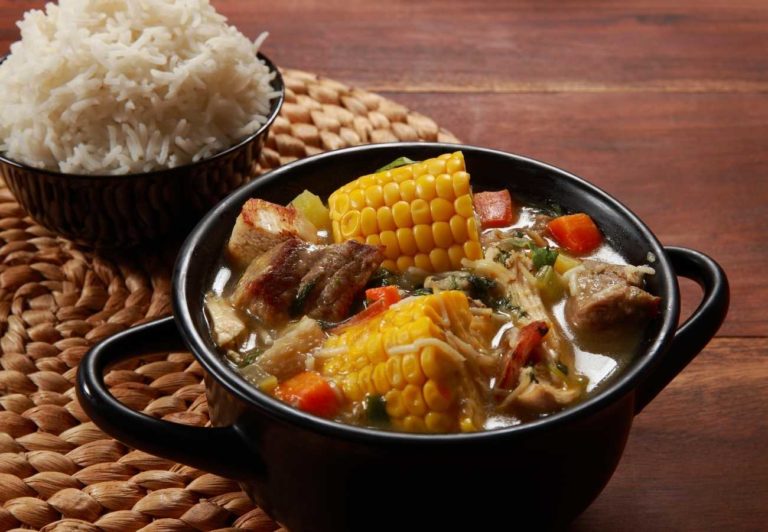Kazakh Food: 11 Traditional Dishes of Kazakhstan
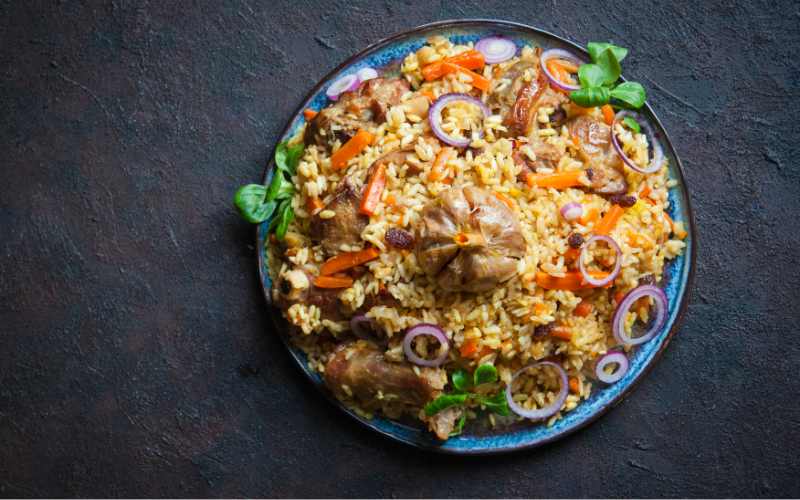
Kazakhstan is a country in Central Asia which is known for being the largest landlocked country in the world. It shares its borders with Kyrgyzstan and Uzbekistan in the south, China in the east, Russia in the north and a shoreline on the Caspian sea.
The country was historically inhabited by the nomadic tribes of Turkic ethnicities and the Mongolian empire. It was later ruled over by the Soviet Union. Kazakhstan is culturally diverse and still holds its nomadic traditions dear. It is endowed with captivating landscapes, from low-lying plains to high mountain regions.
Kazakh cuisine is a culmination of traditional nomadic dishes along with those from Mongolia, Russia, Turkey, the Middle East and other Central Asian countries.
Staples meats in Kazakh cuisine include mutton and horse meat. In fact, horse meat, horse sausage, camel meat and sheeps head are considered delicacies in Kazakhstan.
Spices commonly used include black cumin, black pepper, celery, parsley and sesame seeds. Kazakh cuisine was traditionally based on dairy and meat. Later, vegetables, fruits, nuts and seafood were incorporated to form what we would consider to be modern Kazakh food.
Beshbarmak
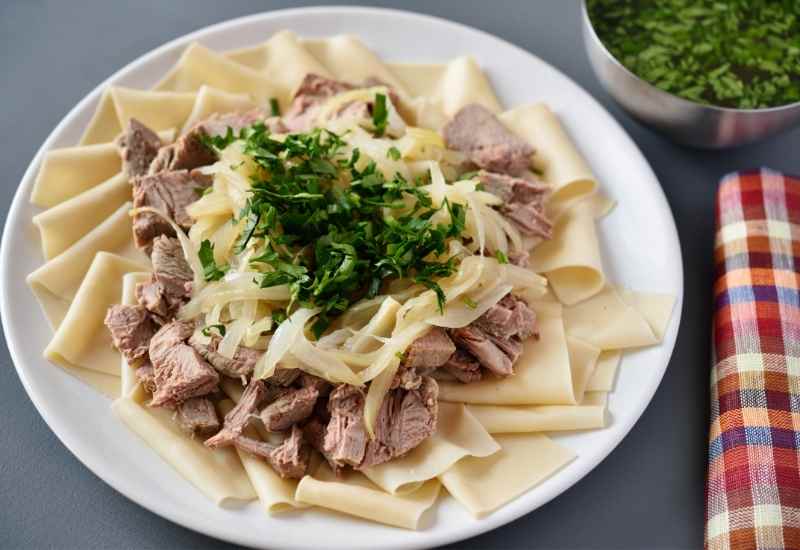
Beshbarmak is a dish prepared with boiled horse meat, beef or mutton. It is typically served with a meat broth called “shorpo”, which is infused with salt, pepper and onion. The meat is laid over thin sheets of homemade pasta to serve.
Traditionally, the meat is cut and served based on age, rank, gender and social status.
Beshbarmak is the national dish of Kazakhstan for a good reason. Its significance is deeply rooted in the culture. The word literally means “five fingers” honouring how the nomads ate with their hands.
Kazy
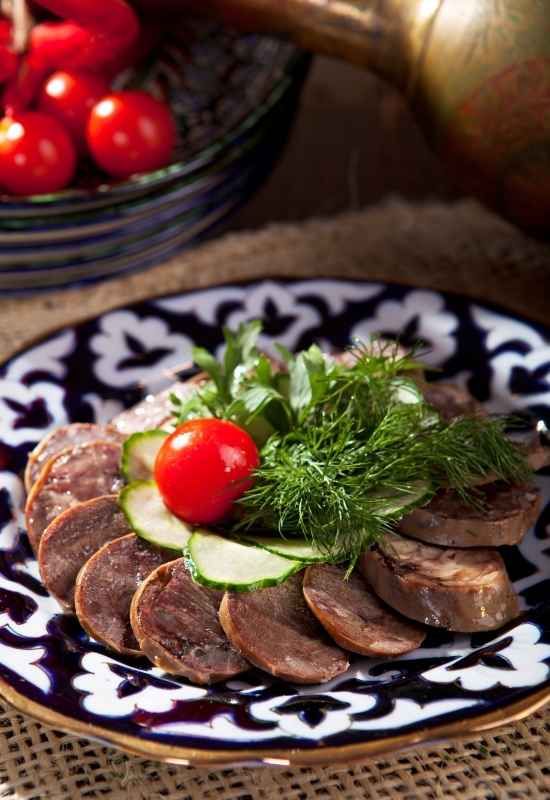
Kazy is a type of horse meat sausage which is also popular in other Central Asian countries such as Kyrgyzstan and Uzbekistan. The meat and fat are seasoned with salt, pepper and garlic before being stuffed into the casings.
The sausages are dried or smoked to preserve and boiled before eating. The dish can be served as a cold appetiser or as an accompaniment with other Kazakh dishes.
Pilaf

Pilaf or Plov is essentially rice cooked in a broth, loaded with onion, carrots, a blend of spices and chunks of meat.
Unlike Iran and Azerbaijan, where rice and meat are cooked separately, the recipe from Kazakhstan requires both to be cooked together. It can be garnished with dry fruits while plating.
Pilaf is a food of celebration, of success and happiness. It is therefore commonly served during holidays and weddings. In Kazakhstan, the dish symbolises prosperity and wealth.
Manti
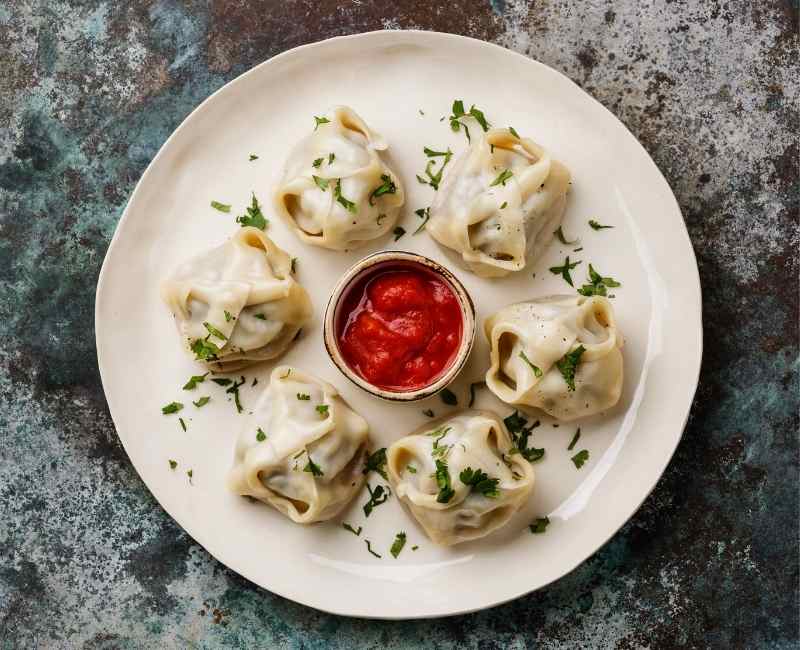
Manti are a type of Kazakh dumplings filled with either minced lamb, horse meat or beef. The meat is seasoned with salt, pepper and mixed with squash or chopped pumpkin.
Famously served with aromatic onion and garlic sauce, sour cream and butter, Manti are typically sold as a street food sprinkled with hot pepper powder.
Kuurdak
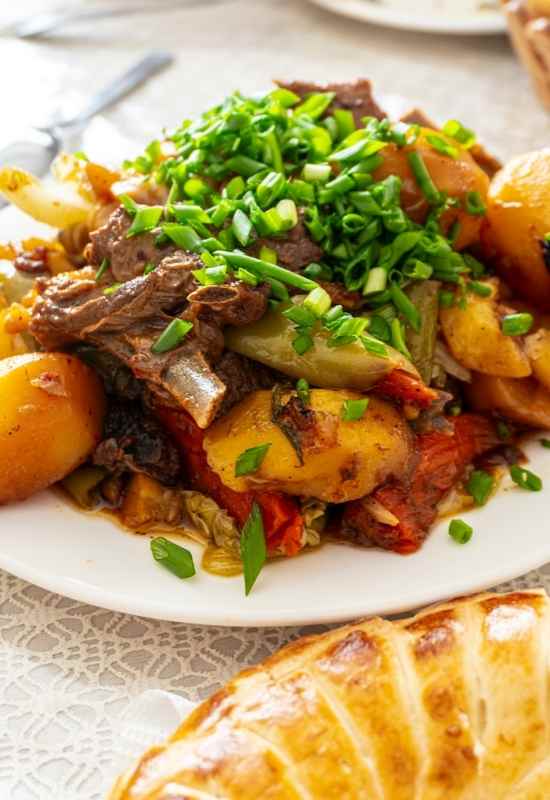
Kuurdak is a dish made with sheep offal including lungs, kidney, heart and liver. It is cooked immediately after the sheep is slaughtered by roasting it slowly with garlic, onion and potatoes.
Kuurdak is among the oldest and most traditional dishes of Kazakhstan. It gets the name from the word “kuyru”, which translates to “roast” in the Kazakh language.
Shelpek
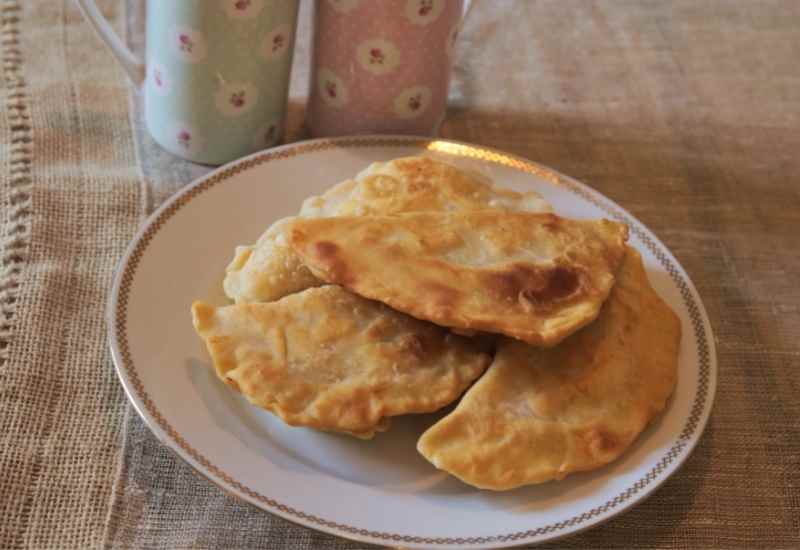
Shelpek is a type of Kazakh flat bread made out of a dough consisting of flour, milk, salt, sugar, butter, baking soda and sour cream. It can be served on its own or with sour cream, cheese or jam alongside a cup of tea.
The dough is kneaded and formed into small balls which are then rolled out into thin circles and fried in oil until it turns rich golden brown.
As a custom throughout Kazakhstan shelpek is often prepared on Friday, a holy day for Muslims, in honor of friends and family who have passed away.
Lagman
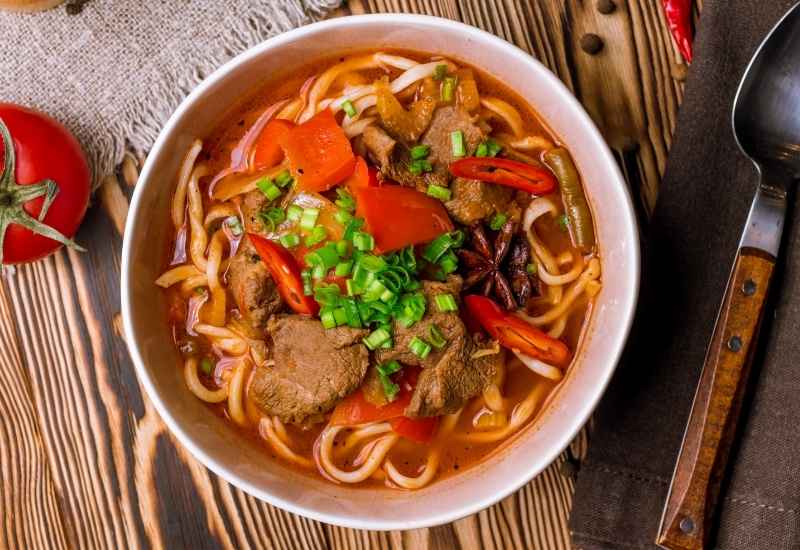
Lagman is a noodle dish consisting of goat, lamb or beef cooked with various vegetables such as potatoes, onions, tomatoes, garlic, green beans and bell peppers. The noodle dough is kneaded, twisted, stretched and folded into thin strands.
Originally Lagman was a dish of the Uyghur and Dungan people but it has since become widely popular throughout the general population of Kazakhstan and is now an essential part of Kazakh cuisine.
Barusak (or Boortsog)
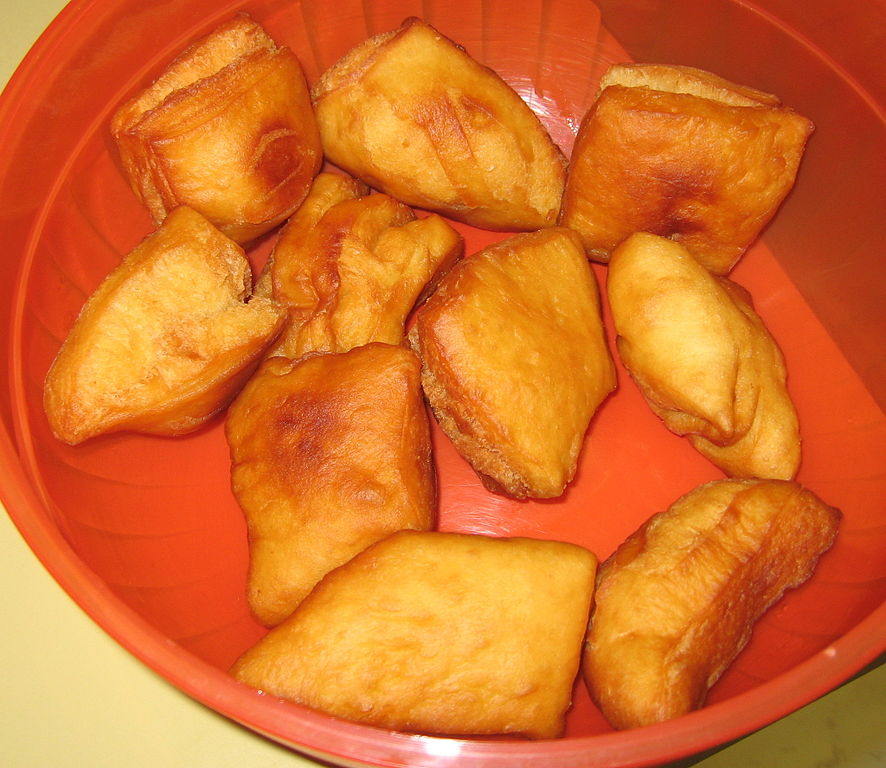
Barusak is a soft, puffy, fried bread; much like a doughnut. The dough is made with flour, eggs, sugar, salt, butter and yeast which is then shaped into spherical balls or slightly larger diamonds before frying.
Most commonly eaten as a dessert after a main meal, barusak is typically accompanied by jam, honey, sugar or butter.
Kazakhs believe that the smell of the bread frying in oil reaches the heavens to the deceased so they can enjoy it with you. It is considered to be a ‘special occasions’ dish, made on birthdays and weddings or memorials.
Chook-Chook
A sweet treat for the sweet-toothed, Chook-chook is a dessert consisting of chunks of dough that are fried until they are golden brown and then generously coated in a sticky sugar glaze.
It is recommended to carry a napkin while devouring chook-chook because these are very messy sticky.
Camel Burgers
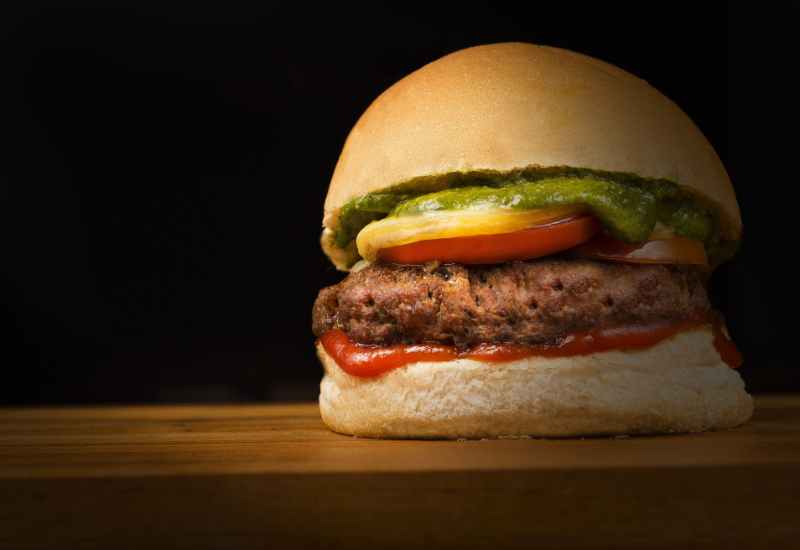
Camel burgers are, quite simply, burgers made from camel meat – most popular in countries where there is a large population of camels.
The meat from the hump is considered to be the most delicious but all of the meat is quite lean, rich in protein and contains less cholesterol than other red meats. The taste is comparable to beef with a slightly more sweet aftertaste.
Chal
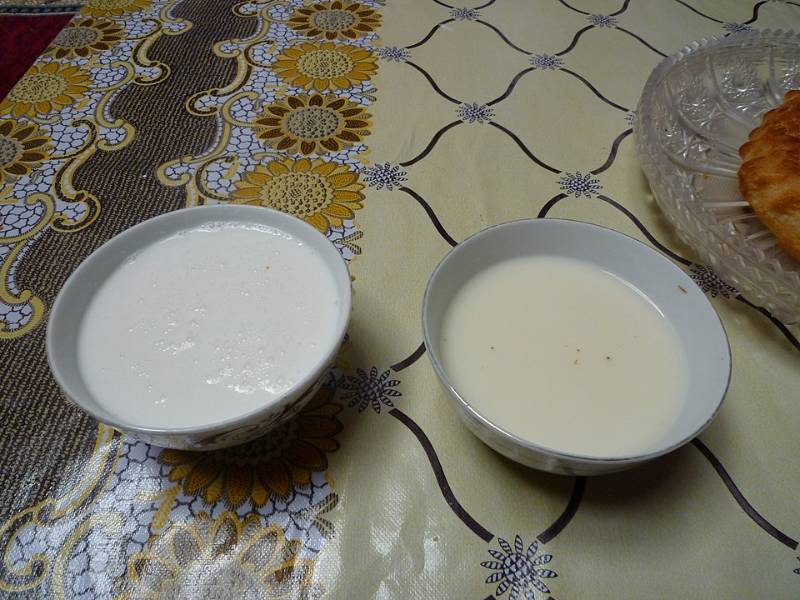
Chal or Shubat is a popular native drink made by fermenting camel’s milk. It is soured for a few days after being poured into a leather skin bag or a ceramic jar and has a short shelf life.
Chal is typically consumed during the hot summer months and is believed to have excellent health benefits such as aiding in digestion and easing anaemia. Chal is similar to the Mongolian drink Kumis, made from mare’s milk.



